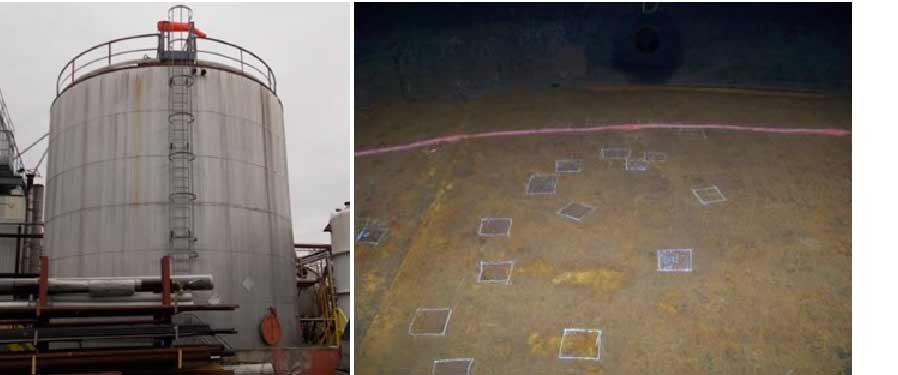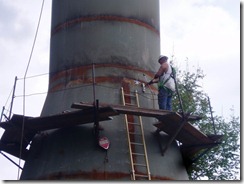The Essential Role of Tank Welding Inspection in Ensuring Structural Honesty and Safety And Security Compliance in Industrial Applications
In the realm of industrial applications, storage tank welding examination emerges as a critical aspect in protecting structural honesty and ensuring conformity with safety and security policies. Using a mix of methods such as visual evaluations and advanced screening approaches, these evaluations offer to identify and reduce potential defects before they intensify into significant risks.
Relevance of Tank Welding Evaluation

Guaranteeing compliance with market standards and laws is another significant aspect of storage tank welding evaluation. Regulatory bodies mandate rigorous standards for the building and maintenance of storage space containers, and complete assessments help companies comply with these requirements. Non-compliance can result in extreme penalties, including penalties and shutdowns, further stressing the requirement for strenuous evaluation methods.
Additionally, container welding assessment plays an important role in keeping operational performance. Regular assessments can identify possible issues prior to they escalate, facilitating prompt repair work and decreasing downtime. This aggressive strategy not only boosts safety yet also adds to cost savings over time. In summary, the relevance of container welding inspection depends on its ability to secure public wellness, safeguard the setting, and ensure conformity with regulative structures.
Key Evaluation Methods
Effective tank welding inspection depends on a variety of essential methods that guarantee complete evaluation of weld quality and structural integrity. Among one of the most common methods are visual inspection, ultrasonic testing, radiographic screening, and magnetic fragment testing - Tank Welding Inspection. Each method offers one-of-a-kind benefits in examining various elements of the weld
Aesthetic examination functions as the initial line of protection, permitting inspectors to recognize surface area flaws, irregularities, or disparities in the weld bead. Ultrasonic screening utilizes high-frequency sound waves to detect inner problems, such as splits or voids, providing a detailed assessment of weld honesty. This approach is specifically efficient in spotting issues that may not show up externally.
Radiographic testing makes use of X-rays or gamma rays to produce pictures of the welds, revealing inner interruptions and offering an irreversible document for future referral. This method is very effective for essential applications where the danger of failure have to be lessened.
Lastly, magnetic fragment testing is utilized to identify surface area and near-surface problems in ferromagnetic materials. By using magnetic fields and great iron fragments, examiners can pinpoint gaps that could jeopardize the architectural honesty of the storage tank. With each other, these methods create a robust framework for ensuring top notch welds in industrial applications.
Conformity With Security Standards

Regular assessments play a crucial function in ensuring compliance by identifying potential failings or deviations from prescribed standards. Inspectors are trained to review weld top quality, validate product specs, and examine the general structural honesty of tanks. Their competence is essential in making sure that welding procedures meet the needed safety and security requirements.
In addition, compliance with Check Out Your URL security standards not just secures workers but additionally safeguards the atmosphere from potential hazards such as leaks or disastrous failings. Organizations that prioritize safety and security compliance are better placed to reduce risks, improve operational effectiveness, and promote a culture of safety and security within their labor force. In summary, maintaining extensive compliance with safety and security standards is essential for the successful procedure of storage tank welding activities in industrial setups.
Advantages of Regular Inspections
Normal assessments are indispensable to preserving the architectural stability and safety of bonded tanks. These examinations provide a methodical approach to identifying potential defects or weaknesses in the welds, go to these guys making sure that any kind of issues are addressed prior to they escalate right into substantial failings. By conducting normal evaluations, companies can identify rust, fatigue, and various other forms of damage that may jeopardize tank performance.
Furthermore, consistent examinations add to conformity with sector policies and criteria. Complying with these guidelines not just minimizes legal risks yet also enhances the company's reputation for security and reliability. Normal examinations promote a positive safety culture, motivating staff members to recognize and focus on the significance of tools stability.

Situation Studies and Real-World Applications
Study and real-world applications illustrate the tangible impact of effective storage tank welding evaluation practices. One notable instance is a huge petrochemical center that encountered substantial functional disturbances as a result of leakages in storage tanks. Following the execution of extensive welding assessment procedures, including aesthetic and ultrasonic screening, the facility recognized important defects in weld joints that might have led to tragic failings. This positive strategy not only protected against ecological dangers but additionally saved the company millions in prospective cleanup expenses and governing fines.
Likewise, a water treatment plant applied a thorough inspection program for its tank welding procedures - Tank Welding Inspection. By integrating non-destructive screening methods, the plant was able to identify early signs of rust and tiredness in weld joints. This prompt treatment expanded the lifespan of the tanks and guaranteed conformity with security guidelines, hence safeguarding public health
These study highlight the significance of routine and systematic tank welding assessments. By focusing on these methods, markets can reduce risks, enhance architectural honesty, and make sure compliance with safety standards, inevitably leading to boosted functional effectiveness and lowered responsibilities.

Conclusion
In conclusion, tank welding examination is an important element of keeping structural integrity and safety and security in commercial applications. Using different evaluation techniques makes certain early detection of potential flaws, thereby protecting against catastrophic failings. Adherence to safety and security standards additionally improves functional dependability and conformity with regulative needs. Eventually, normal assessments not just safeguard public wellness and the atmosphere but additionally add to the long life and efficiency of essential possessions, underscoring the essential function of this practice in commercial procedures.